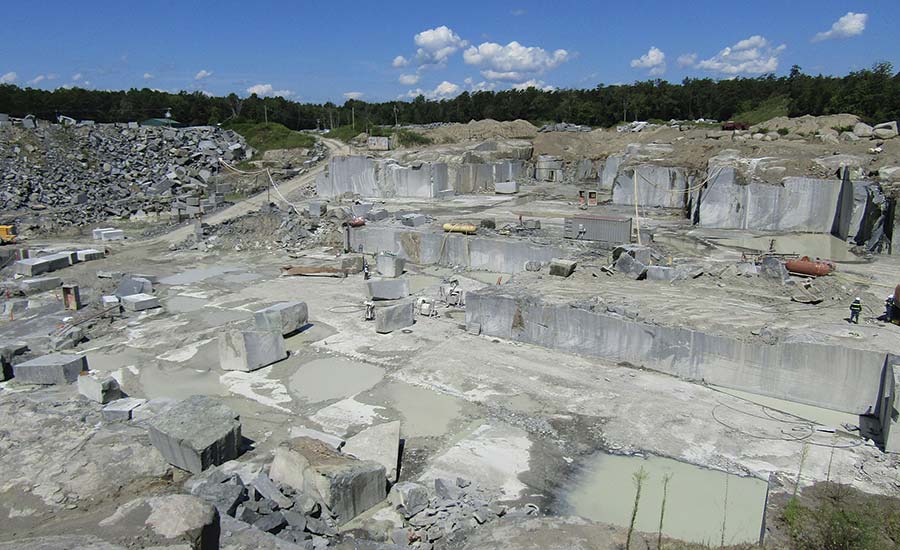Unveiling Granite Quarries in South Africa Heritage: A Journey Through Quarries
Unveiling Granite Quarries in South Africa Heritage: A Journey Through Quarries
Blog Article
Discovering the Rich History and Sustainable Practices of Granite Quarrying
As we depend on the precipice of uncovering the complex tapestry of granite quarrying, a trip with time exposes not just the physical act of extracting rock but also the cultural and historic value woven right into the really textile of this method. From the old beginnings that laid the structure for modern quarrying techniques to the lasting practices that are forming the future of this sector, each chisel mark on granite surfaces informs a story waiting to be discovered (granite quarries in south africa). The legacy of granite quarrying stretches much beyond simple removal; it is a testament to human ingenuity, durability, and the long-lasting allure of this stunning rock
Old Origins of Granite Quarrying
Going back to old people, the technique of quarrying granite has actually been an important component of human history and architectural innovation. The earliest proof of granite quarrying go back to ancient Egypt, where massive pyramids and detailed sculptures were crafted from this resilient stone. The Egyptians used primitive tools to remove granite blocks from quarries, showcasing the relevance of this product in their monumental building and constructions.
Progressing in history, the Greeks also made substantial contributions to the quarrying of granite. The Greeks used granite in different architectural wonders, such as holy places and statues, demonstrating their ability in shaping and sculpting this durable stone. The Romans better improved the strategies of quarrying granite, utilizing innovative tools like knives and hammers to remove and form granite for their iconic frameworks.
With the centuries, the technique of quarrying granite has actually advanced, with contemporary technologies boosting efficiency while preserving the timeless appeal of this all-natural stone - granite quarries in south africa. From old people to contemporary contractors, the heritage of granite quarrying continues to shape our globe
Evolution of Quarrying Strategies
The advancement of quarrying methods has actually been marked by a continual progression in the direction of higher effectiveness and accuracy in drawing out granite. From the rudimentary techniques used by our ancestors to the advanced modern technologies made use of in contemporary quarrying operations, the industry has gone through significant advancements. Early quarrying techniques involved manual work with standard tools such as chisels, hammers, and wedges to extract granite blocks from the planet. As civilizations progressed, techniques like fire-setting and primitive dynamites were presented to assist in the extraction procedure.
In more current times, the development of equipment changed the quarrying industry, making it possible for quicker removal prices and enhanced performance. Technologies such as diamond cable saws, high-pressure water jets, and pneumatically-driven drills have ended up being standard in contemporary quarries, enabling accurate cutting and minimized waste. Furthermore, improvements in computer-controlled tools and 3D modeling have enhanced quarrying procedures, causing minimal environmental influence and improved sustainability techniques. As the need for granite remains to rise, the evolution of quarrying methods continues to be important to conference sector requires effectively and sustainably.
Social Significance of Granite
Granite holds an extensive cultural significance across different human beings as a result of its long-lasting visibility in building work of arts and respected monoliths. From the magnificent pyramids of Egypt to the intricate makings of the Angkor Wat holy place in Cambodia, granite has been a material of selection for sharing majesty and durability in cultural heritage. In old Rome, granite columns embellished temples and public buildings, representing strength and permanence. The cultural relevance of granite prolongs beyond its physical characteristics; it personifies durability, stability, and eternity, making it a sign of sustaining traditions and traditions.

Lasting Practices in Quarrying
In the check these guys out middle of the rich background of granite quarrying and its social relevance lies a growing focus on lasting methods within the market. As environmental understanding and concerns concerning source exhaustion have actually increased internationally, the quarrying field has actually significantly accepted sustainable techniques to lessen its effect on the setting and surrounding areas.

Furthermore, improvement and rehab of quarry websites post-extraction are integral to sustainable techniques. By recovering quarried locations to a natural or useful state, such as developing wild animals environments or recreational areas, quarriers can offset the ecological footprint of their procedures and add positively to the regional community.
Tradition of Granite Quarrying
With a historical backdrop soaked in workmanship and commercial development, what withstanding effect has granite quarrying left on the landscape of modern society? The heritage of granite quarrying goes beyond plain removal methods; it has shaped building wonders, urban landscapes, and cultural heritage worldwide. The sturdy nature of granite has actually made it a recommended option for monuments, buildings, and infrastructure, standing as a testimony to the skill and creativity of quarry workers throughout generations.
In addition, the financial impact of granite quarrying can not be ignored. The sector remains to offer job opportunity and drive local economies in regions where granite removal prevails. It has actually likewise spurred technological advancements in quarrying techniques and tools, bring about a lot more effective and sustainable techniques.
In terms of sustainability, Resources the tradition of granite quarrying includes efforts to alleviate ecological impacts via recovery projects and accountable resource management. By stabilizing economic rate of interests with ecological stewardship, the market aims to ensure that future generations can remain to take advantage of this enduring natural deposit.
Final Thought

Report this page